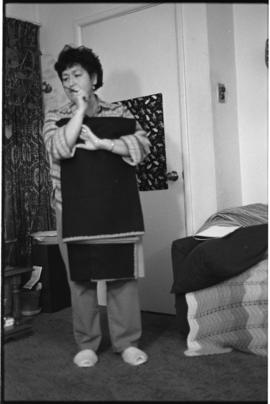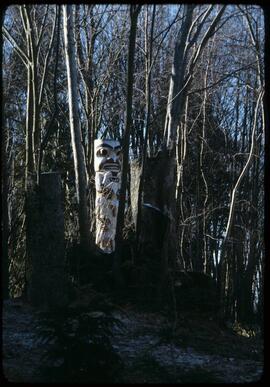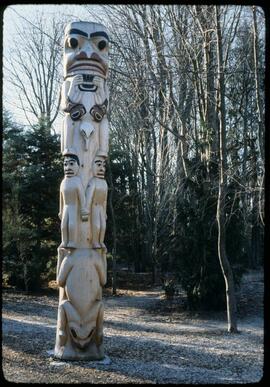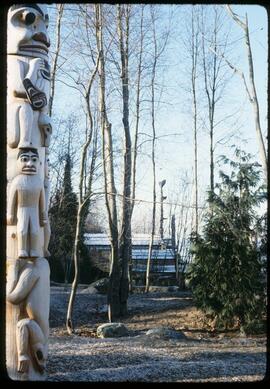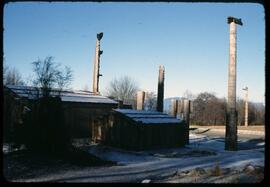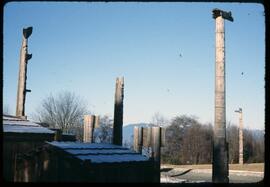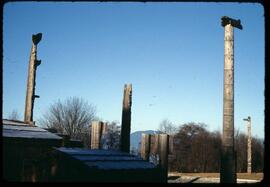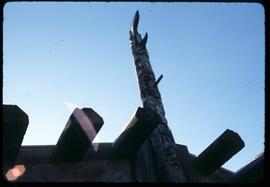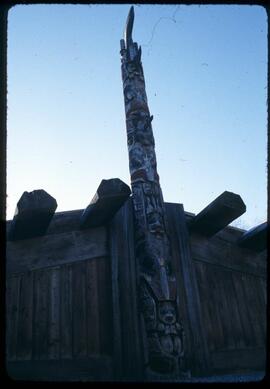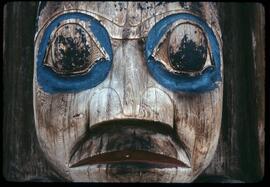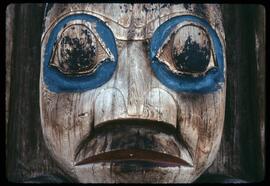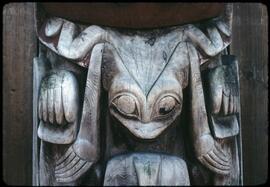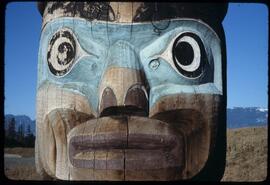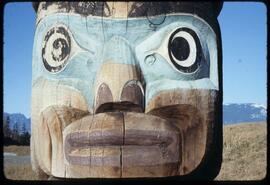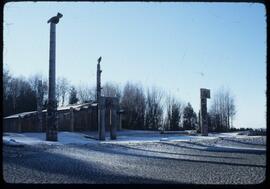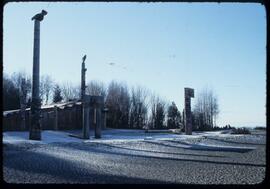Title and statement of responsibility area
Title proper
Vickie Jensen and Jay Powell fonds
General material designation
Parallel title
Other title information
Title statements of responsibility
Records compiled by Vickie Jensen and Jay Powell May – September 2008
Title notes
- Source of title proper: Title based on the content of the fonds
Level of description
Fonds
Reference code
Edition statement
Edition statement of responsibility
Statement of scale (cartographic)
Statement of projection (cartographic)
Statement of coordinates (cartographic)
Statement of scale (architectural)
Issuing jurisdiction and denomination (philatelic)
Dates of creation area
Date(s)
Physical description area
Physical description
ca. 7 m of textual records, photographs, and other material
Publisher's series area
Title proper of publisher's series
Parallel titles of publisher's series
Other title information of publisher's series
Statement of responsibility relating to publisher's series
Numbering within publisher's series
Note on publisher's series
Archival description area
Name of creator
Biographical history
Vickie Jensen and Jay Powell are partners in both life and work. Since the early 1970s they have worked together in Washington State and British Columbia to study, document, and help revitalise indigenous languages in the communities in which they were active. In addition to language work, the couple promoted Indigenous artists and assisted First Nations in their efforts to achieve self-determination.
James V. Powell (Jay) completed his first degree in archaeology at Wheaton College in Illinois in 1959. He then studied Near Eastern languages at the National University of Mexico, the University of Chicago, and Hebrew University in Jerusalem. Between 1958 and 1965 he worked on excavation sites in Mexico, Jordan, Egypt, Israel, Pakistan and Afghanistan. In 1965, seeking a quieter life, he began a degree at the University of Denver studying Archival Science, which he completed a year later. He then took a research librarian position at the New York Times and published two books on the translation history of the bible. In 1968 Powell began graduate studies in linguistics at the Pacific and Asian Linguistics Institute, University of Hawaii. In 1969 he began to conduct research on the Quileute language in La Push, Washington State for his M.A. and PhD degrees in Anthropological Linguistics. His dissertation, Proto-Chimakuan: a Reconstruction was completed in 1974.
Jensen earned a B.A., magnum cum laude, in English from Luther College in 1968. She then went on to do a Master of Arts in Teaching at the University of Iowa, which she completed in 1970. For her Master’s degree she specialised in education for children and youth that have trouble fitting into mainstream schools. During this period she also studied photography. She was employed in alternative education programs, and while teaching in South Dakota worked with Sioux adults. These experiences led to her strong conviction that teaching materials should reflect the students’ own environments and that language education should be pragmatic and realistic in its goals. She felt that incorporating photography that the students could relate to would lead to success in achieving these objectives.
In the summer of 1972 Jensen travelled to La Push to visit Powell, with whom she had been corresponding. While there, she photographed the community. In December of the same year she immigrated to Canada to join Powell in Vancouver where he had taken a teaching job at the University of British Columbia (UBC). At that time, the two began their collaborative work with Northwest coast communities, travelling to the villages in which they produced educational materials during Powell’s breaks at the University. Powell taught linguistics at UBC until his retirement in July 1999. Throughout his career he researched the languages of a number of indigenous groups and produced approximately 130 publications in linguistic, anthropological, pedagogical and popular journals, and books. Jensen’s first job in Canada was at the Gallery of Photography in North Vancouver where she worked and taught. In addition to a number of other photographic projects, many as part of her collaborative work with Powell, Jensen was editor of Westcoast Mariner Magazine from March 1988 – June 1991, and for Office @ Home from 1997 – 1999. Between 1995 – 2001 she published a number of articles and books on marine themes, focussing on underwater vehicles.
In addition to their work in the Northwest Coast, Jensen and Powell have also photographed and conducted research in communities around the world. This includes work in the USA, Mexico, South America, as well as four sabbatical years that took the couple and their two sons through Europe, Asia, South America, and Africa. As well as research trips, Jensen and Powell have spent recent years lecturing on cruise ships and travelling for pleasure.
Powell has remained active as an ethnographic and linguistic consultant throughout the Northwest coast since his retirement from UBC. He and Jensen continue to work with communities with which they have established relationships, on both a formal and an ad hoc basis. Powell has an ongoing contract with the Haisla, and there will likely be more work with the Quileute, in addition to casual projects that come up periodically.
Custodial history
Scope and content
Fonds consists of records relating to the numerous culture and language projects that Powell and Jensen worked on since 1976. The communities with which they worked include:
• The Quileute of La Push
• The Kwakwaka’wakw of Alert Bay
• The Gitxsan of Kispiox, Gitanyow, and surrounding villages
• The Nuu-chah-nulth of Vancouver Island
• The Musqueam of Vancouver
• The Seton Lake St'at'imc (Lillooet) of Shalalth
• The Shuswap of Alkali Lake, Soda Creek, Dog Creek, Canim Lake, and Sugar Cane
• The Haisla of Kitamaat
• The Nisga’a of Gingolx (Kincolith) and New Aiyansh
Most of the projects had an end goal to produce a book, language education materials, or teacher training materials. Often the education materials incorporated cultural lessons throughout. The records created in the production of the books are varied and reflect the intrinsic connection between language, culture, and daily activities in the communities. Powell and Jensen were co-editors for nearly all of the language books and materials produced. Although some of the projects reflected in the records were done primarily by Powell or primarily by Jensen, the vast majority of the work involves collaboration between the two in some aspect. As Jensen and Powell immersed themselves in the communities they worked for, often their personal photographs and records are interspersed with those relating to their work. This community involvement enhanced their relationships with the people with whom they were working and allowed them to experience and participate in cultural activities as part of those communities. This close relationship is reflected in and is integral to their work. Jensen and Powell have two sons: Nels, born in 1978, and Luke, born in 1981. Their sons travelled with them to the communities in which they worked and lived, and on their work trips and sabbaticals. Nels and Luke are also present in many of the photographic records.
The records contain a mixture of research, field notes, administrative records, and publications at various stages, in addition to audio and visual records. Field notes, for the most part handwritten, and archival research into language and culture groups was undertaken by Powell, whilst the majority of the photography, found in a variety of formats, was done by Jensen. Manuscripts and final publications were a combined effort and are included at various stages. Administrative records, including grant proposals, are found throughout.
Fonds consists of 13 series of records. Series are arranged according to community and/or project.
Notes area
Physical condition
Immediate source of acquisition
Records donated by Powell and Jensen in October 2008
Arrangement
Records arranged immediately preceding acquisition by the creators. The creators placed emphasis on the language of the communities, as much of their work was in language preservation: therefore, the series are arranged and titled for the most part by the language of the individual projects, rather than the name of the cultural group. The arrangement of the series is based on the importance given each project by the creators, which reflects a combination of the amount of time spent with the community, the amount of records accumulated in the project, and at times the chronological order of events.
Language of material
Script of material
Language and script note
The main body of the records is in English. Each series related to the creation of language materials includes records in one of the following languages: Kwak’wala; Quileute; Chinook Jargon; Gitxsan; Nuu-chah-nulth; Salishan dialects. These languages appear at times written in roman orthography, and at times in alphabets unique to the region in which they are spoken. Other languages appear with less frequency, such as French, Nisga’a, Haisla, Tsimshian, etc.
Location of originals
All originals with Museum of Anthropology Archives unless otherwise stated
Availability of other formats
Restrictions on access
Some photographs and audio recordings may contain culturally sensitive information. Consult Archivist for details.
Terms governing use, reproduction, and publication
Copyright held by Vickie Jensen and Jay Powell unless otherwise stated
Finding aids
Finding aid
Associated materials
Accruals
Further accruals are expected
General note
The main body of the records is in English. Each series related to the creation of language materials includes records in one of the following languages: Kwak’wala; Quileute; Chinook Jargon; Gitxsan; Nuu-chah-nulth; Salishan dialects. These languages appear at times written in roman orthography, and at times in alphabets unique to the region in which they are spoken. Other languages appear with less frequency, such as French, Nisga’a, Haisla, Tsimshian, etc.
General note
Terminology has changed over the years in referring to Indigenous peoples. In this finding aid, First Nations, Aboriginal, and Indigenous are used to discuss the groups of the Northwest coast. Whenever possible the names specific to communities or culture groups are used, such as Quileute. The term Indian is only used in this finding aid when in direct reference to a file or item title. In Northwest coast cultures the concept of “Elder respect” is prevalent, and therefore the term Elder has been capitalised in the same way other honorifics such as Doctor or Chief are. For more information regarding this concept, please refer to the following dissertation: Understanding peoples on their own terms : a rationale and proposal for an Aboriginal style guide / by Gregory Young-Ing
Physical description
Includes: ca. 38,000 photographs ; ca. 100 audio reels ; ca. 120 audio cassettes ; ca. 10 CDs ; 1 microfilm ; other material. Individual contact prints made by Jensen of the negatives included in the fonds are not included in the physical description
Accompanying material
Additional documentation regarding the records in this fonds are available. This documentation was created by Vickie Jensen and includes timelines, background, contextual, and biographical information. Consult archivist for access to these documents.
Alternative identifier(s)
Standard number area
Standard number
Access points
Subject access points
- Cultural groups » First Nations » Kwakwa̱ka̱ʼwakw
- Cultural groups » First Nations » Northern Coastal British Columbia and Alaska » Gitxsan
- Cultural groups » First Nations » Nuučaan̓ułʔatḥ
- Cultural groups » First Nations » Northern Coastal British Columbia and Alaska » x̄á’isla
- Cultural groups » Quileute
- Cultural groups » Chinook
- Cultural groups » First Nations » Coast Salish
- Cultural groups » First Nations » Interior Salish and Southern Interior of British Columbia » Secwépemc
- Carving » Totem poles
Place access points
Name access points
- Norman Tait (Subject)

